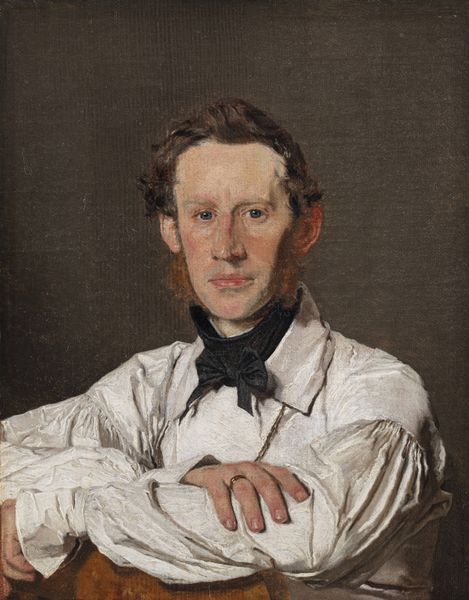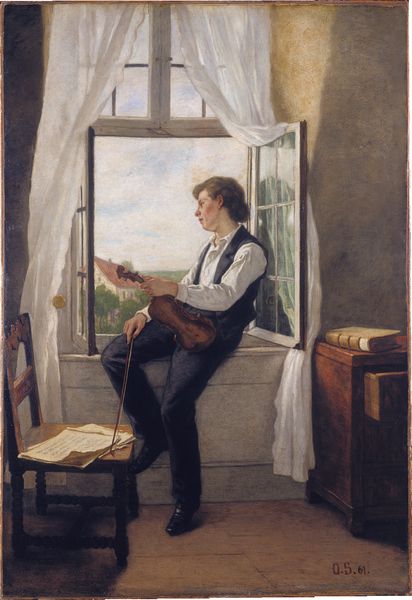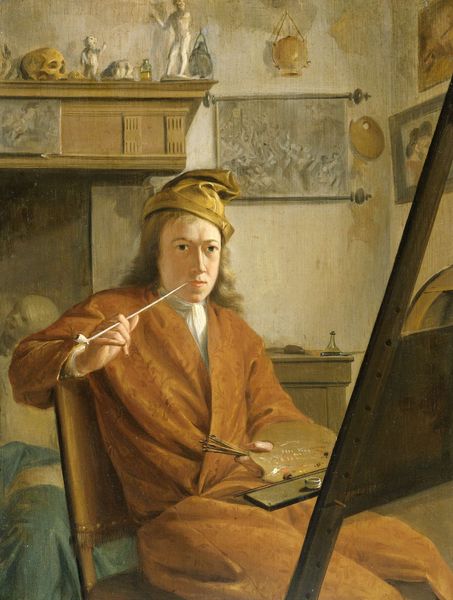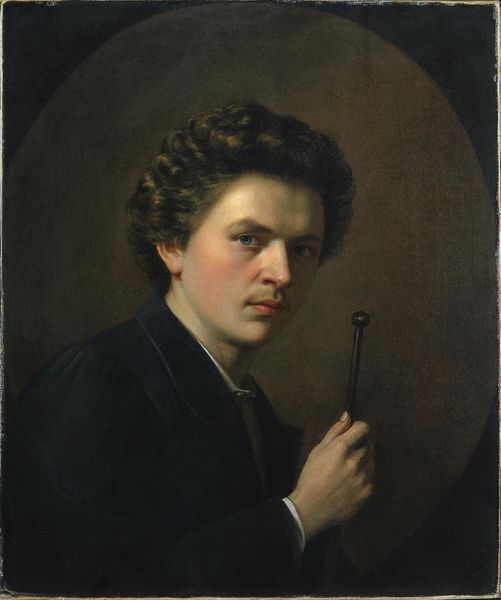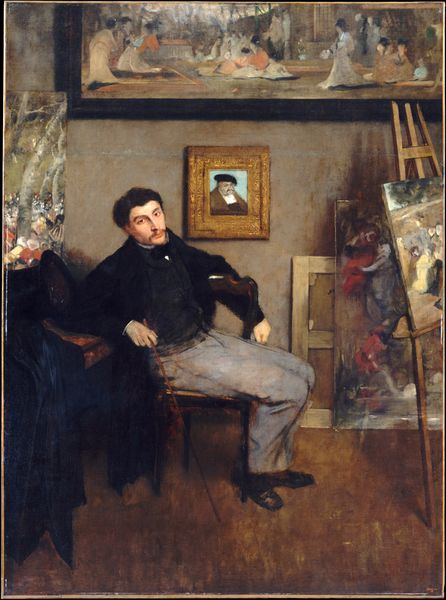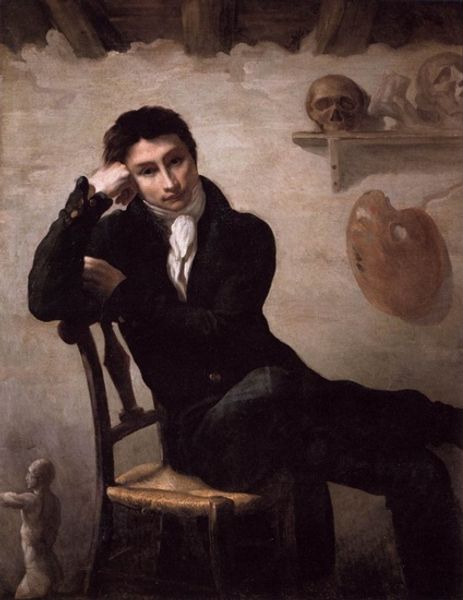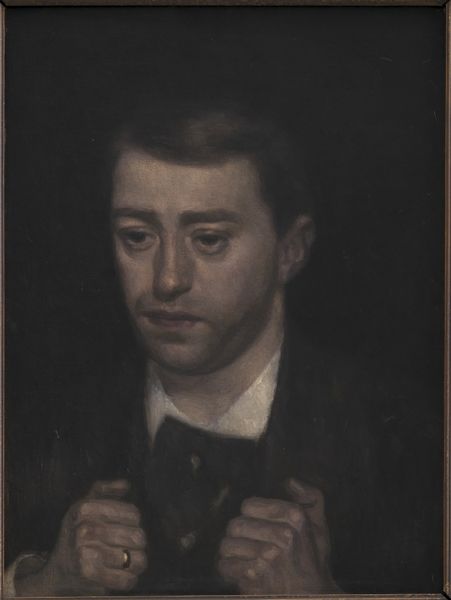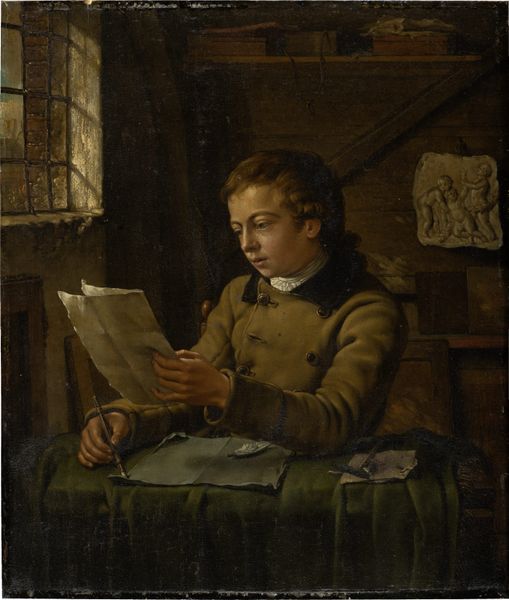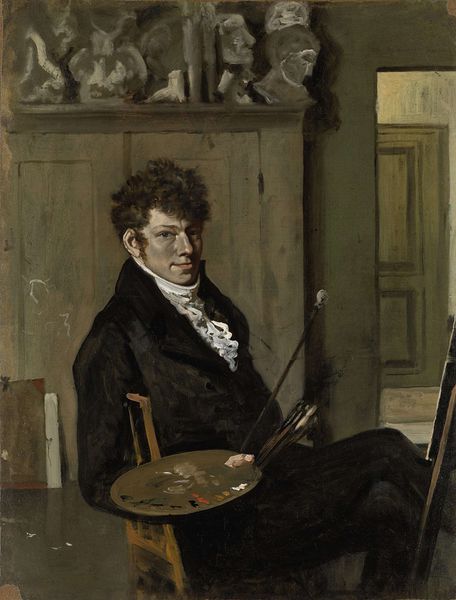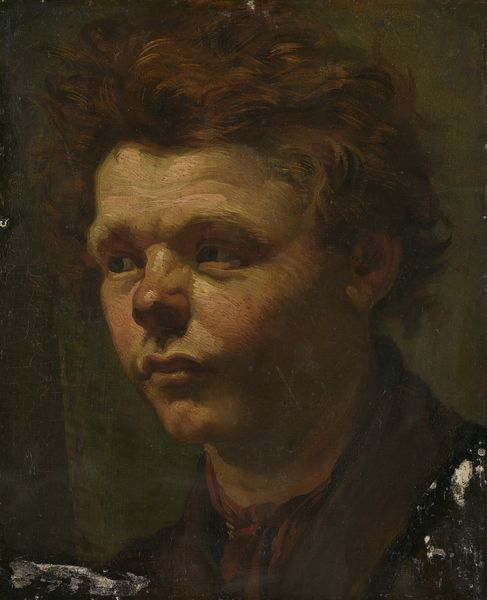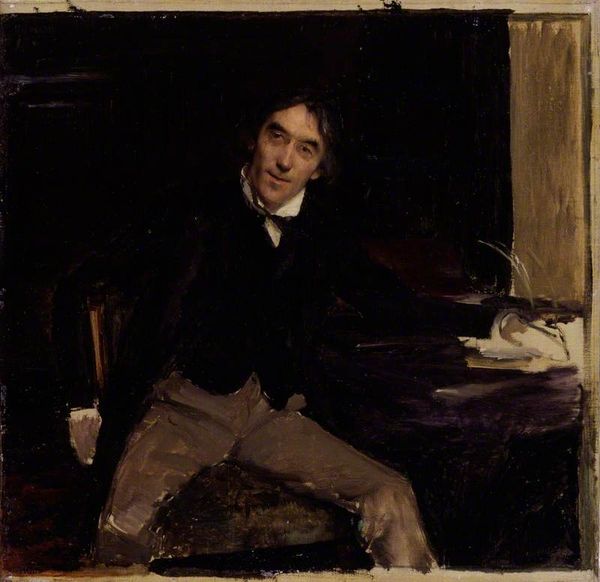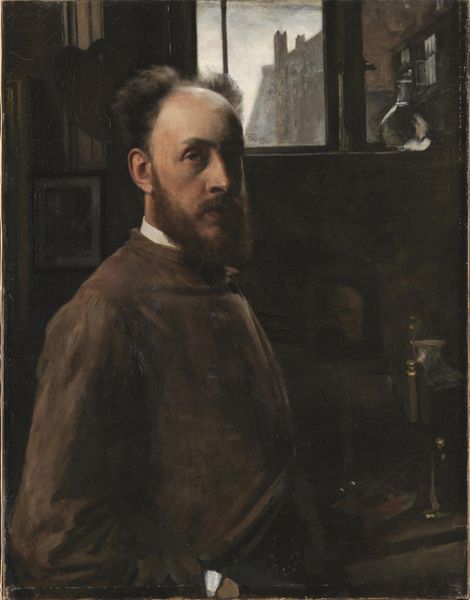
Portrait of the Copperplate Engraver Carl Edvard Sonne 1824 - 1827
0:00
0:00
painting, oil-paint, canvas
#
portrait
#
painting
#
oil-paint
#
charcoal drawing
#
oil painting
#
canvas
#
romanticism
#
genre-painting
#
academic-art
Dimensions: 69.5 cm (height) x 56 cm (width) (Netto), 85.3 cm (height) x 72.2 cm (width) x 8.2 cm (depth) (Brutto)
Curator: Ditlev Blunck’s *Portrait of the Copperplate Engraver Carl Edvard Sonne* is a remarkable example of Danish Golden Age painting, completed sometime between 1824 and 1827. Blunck captures Sonne in what seems to be his natural habitat, surrounded by the tools and symbols of his trade. Editor: The first thing I notice is how contained the portrait feels; he’s boxed in. The soft light makes the subject, this engraver, seem almost fragile. What do we know about how someone like Carl Edvard Sonne fit into this period of art making? Curator: That’s perceptive. Consider that Sonne, as an engraver, would have reproduced and disseminated imagery created by others. The power dynamics are subtle but important here: Blunck, the painter, elevates the engraver to a subject worthy of artistic representation, imbuing his likeness with a sense of dignity. It disrupts hierarchies of labor. Editor: The window and pictures within pictures point to layering of realities that seem pertinent to representation, to me. Those details pull the viewer inward. Did Blunck fill this space with symbols meaningful to Sonne’s cultural context? Curator: Definitely. There's an underlying cultural story embedded here. Notice the landscape print on the wall? Copperplate engraving played a vital role in disseminating knowledge and shaping perceptions of the world during the 19th century. Those symbols remind viewers that knowledge and artistry build on each other, always pointing forward. Editor: That idea of ‘pointing forward’ gets back to how his image can almost trick you to empathize. Maybe the artist is encouraging me, a contemporary viewer, to question the value judgements we place on different types of work. He isn’t only an engraver; Blunck renders Sonne as intellectual and artist. Curator: Exactly. This piece pushes against class assumptions and makes the invisible visible. The composition emphasizes how artistic skill should not overshadow or invalidate craftsmanship. I find that incredibly impactful even now. Editor: Yes, by immortalizing the engraver, Sonne’s likeness—and status— is permanently elevated beyond that original categorization. So much meaning is communicated through one painting. Curator: Agreed; it gives us a fascinating snapshot of cultural dynamics that feels alive even today. Editor: An active dialogue with the past through visual form. I'll be thinking about the nuances here for some time to come.
Comments
statensmuseumforkunst almost 2 years ago
⋮
In paintings such as this, Ditlev Blunck together with Wilhelm Bendz developed the type of the genre painting of the time portraying the artist at work in his studio. Typical of this type of motif was the fact that in addition to portraying everyday situations in the studio, in the Romantic spirit of the time it also thematised the essence of art and the artist’s prerequisites. So it is of particular interest that it is a Dutch genre motif, Gerard ter Borch’s Seated girl in Peasant Costume (c. 1650), that is seen in what is to be assumed is a trial print hanging by the engraver’s work table. The other pictures behind Sonne are prints after Blunck’s teacher C.A. Lorentzen and the former professor from the Academy, N.A. Abildgaard. Blunck has thus introduced the Dutch model on an equal footing with his own teachers. With this, the picture gives an impression of the kinds of motif that were reproduced in the Denmark of the Golden Age. But if it is read as an artistic manifesto, it shows which masters formed the background to the oeuvres of Blunck and his colleagues. Blunck was one of the earliest genre painters of the Danish Golden Age. He derived inspiration both from Eckersberg and from the more idealised German art.
Join the conversation
Join millions of artists and users on Artera today and experience the ultimate creative platform.
